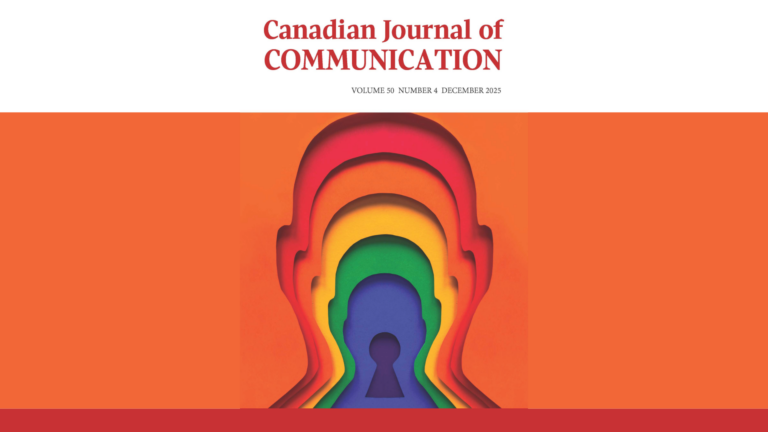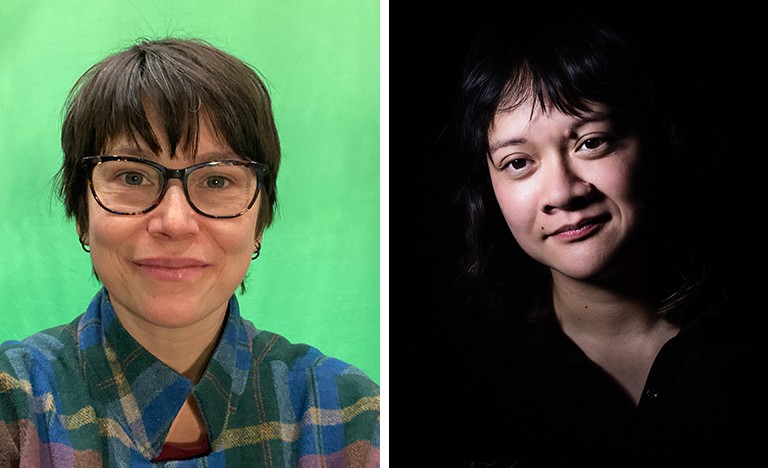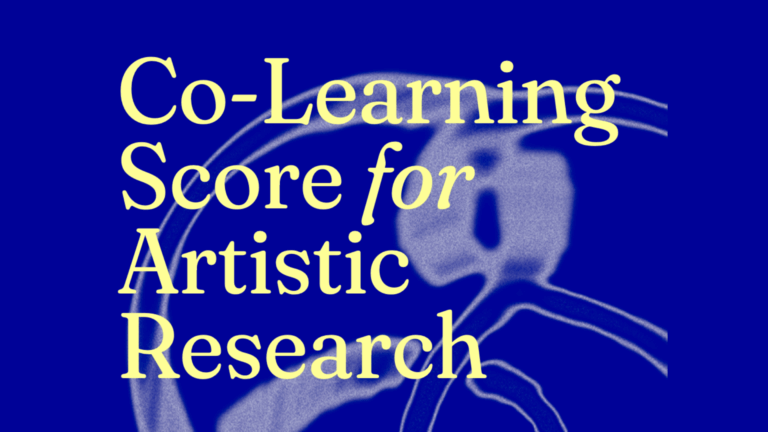The sounds were like rocks bouncing off a cave wall, or fingers scratching at bark. They came, though, from charcoal on paper. I watched as ten or so scholars – and one child – hunched over a large sheet on the floor of the LePARC studio, scribbling shapes. Microphones dotted around the paper picked up the sounds of their scratchings, which were then processed through effects pedals and amplified back into the room.
I sat on the sidelines, considering whether to join in. I was new to the space – not just LePARC, but the Milieux Institute which houses the LePARC cluster. The occasion was an end of year mixer titled ‘Speculations in the PARC’ and hosted by the performance researchers at LePARC and the future-oriented scholars at Speculative Life. It was also my first day on the job as the new Storyteller at Milieux Institute.
The inter-disciplinary performance piece of undergraduate students Valentina Plata & Aybi Özel was a perfect introduction to the myriad possibilities of research at Milieux. Plata and Özel met in the cross-faculty class Dance as Social Life and Cultural Practice, which brings together history and performance arts students in an exploration of methods. From that class, their collaboration emerged, with Özel, a visual arts student, leading the drawings and Plata, an incoming undergraduate fellow at Milieux, manipulating the sounds.
Their performance established a sense of joint inquiry for the evening. Attendees had gradually, and then enthusiastically, joined Özel around the paper. I resolved to hang back around the edges, watching them scribble busily. Some sat outside the circle, eyes-closed, listening to the expanding soundscape. The sole child in attendance began hammering on one of the mics, prompting some wonderfully aggressive sounds, though eventually an adult intervened in the intensity. I smiled to myself. The risks of collective creation.
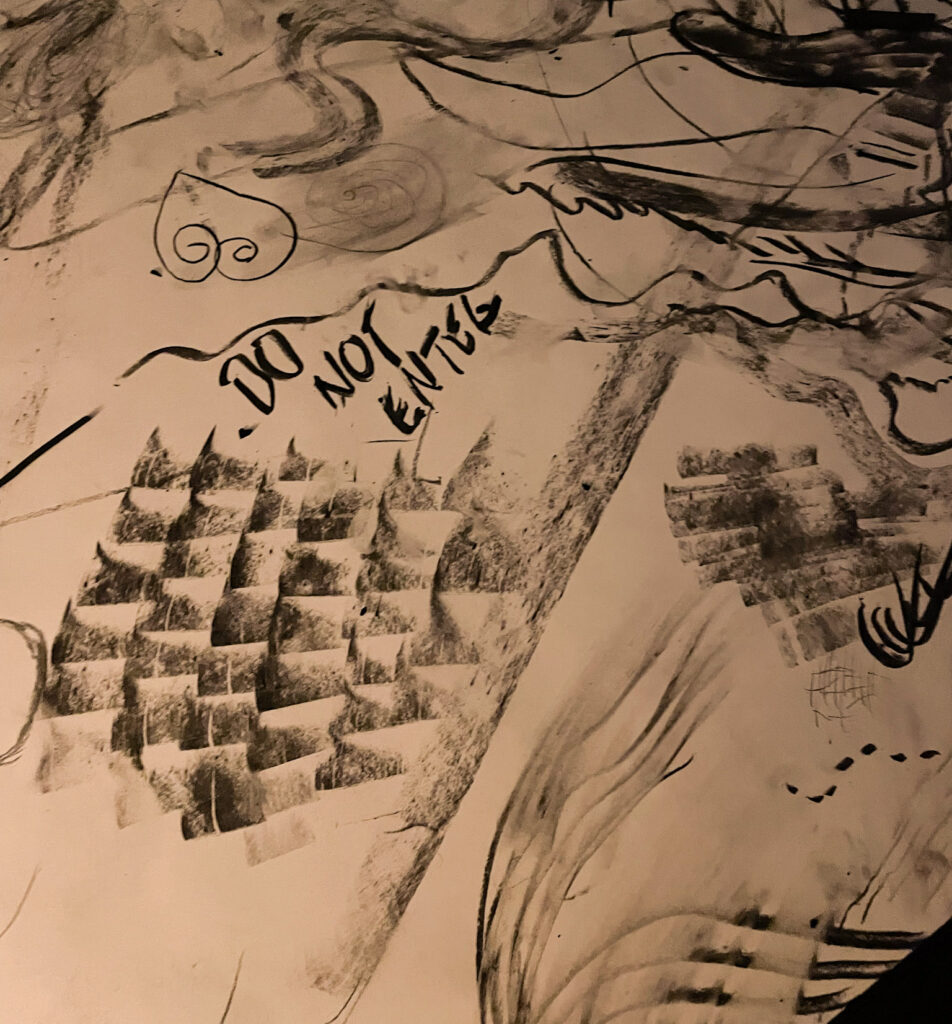
We shifted over to the Spec Life lab, where the evening took on a more traditional mode of research presentation. MFA students Las Sabinas – both called Sabina – presented their art practice, which intervenes in representations of the conquering of the Sabine women. Their latest project is a video in which they appear to be climbing a tankard from the Art Gallery of Ontario. The tankard features intricate designs of violence against the Sabine women.
Las Sabinas, in climbing the tankard, are (re)conquering it: playfully undermining the object that freezes violence into decoration. I found myself laughing out loud at the presentation, relishing their undermining of masculinist art while also struck by how they captured a sense of exhaustion in their footage. This fake climb, like any feminist interjection into a patriarchal landscape, was tiring work.
PhD student Zeph Thibodeau then introduced us to a robot, the charming and curious Manif, brought to life from a re-purposed alarm clock (Clocky). Thibodeau is interested in what he calls “useless robots” like Manif who once had a corporate-designated purpose and now exist for themselves. Like Las Sabinas, Thibodeau offered an intervention that reworked the purpose of his research object, suggesting a future oriented around care rather than relations structured through value-added.
Faculty member VK Preston continued the exploration of care, sharing an in-progress writing project, “Between Water + Stone.” The project documents their experiences visiting their father in the hospital amidst the lockdown protocols of the COVID-19 pandemic. Preston presented photos from the hospital alongside snippets of poetry, emphasizing the toll of isolation and wondering about the right to cultural experience. I was moved by Preston’s documentation of experiences that are often glossed over in official and even personal memory.
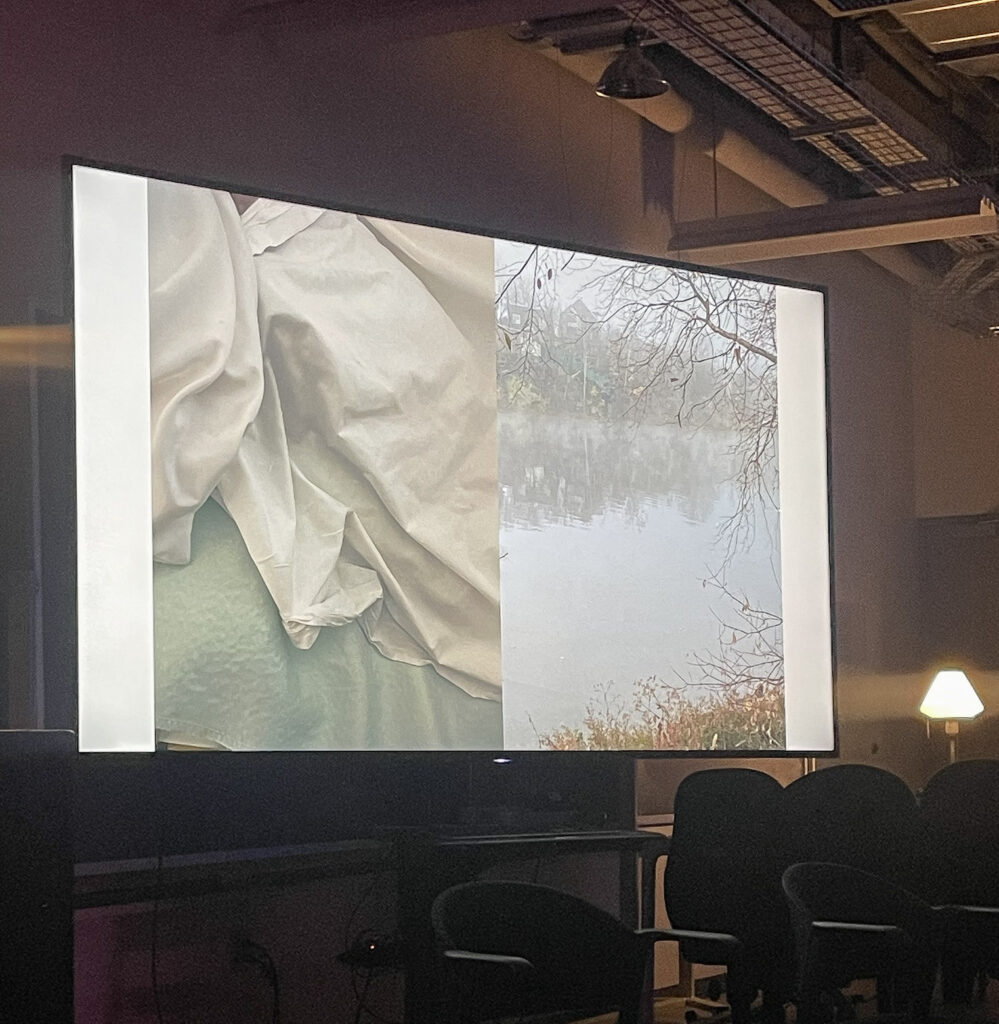
Next we waded into a series of water-themed works. Spec Life coordinator Maya Lamothe-Katrapani, as part of her MA research, is conducting an ethnographic study of the Lachine Canal in Pointe St. Charles. She shared some written observations about how developers and residents are making use of – and meaning out of – the space around the Canal, including sharing a promotional video for condo developments that emphasizes their proximity to the highway. Just a quick drive to greener pastures, the video suggests, imagining the Canal as already elsewhere.
Malte Leander, LeParc coordinator and sound artist, presented his work as a composer with the Immersion Project, which is developing artificial coral reefs. Currently an above-ground installation, the goal is for the reefs to submerge and help revitalize underwater ecosystems. Doctoral student and sailor Polina Shubina then brought us back up to the surface, presenting her research on sailing circuses. She hopes, as part of her research creation PhD, to start her own aquatic circus in Montreal.
At this point I was struck by the emergence of motifs: not just a serendipitous focus on water, but a clear sense of performance and creation as a way into re-imagining past, present and future. Las Sabinas redirect the remembering of what matters in art history; Lamothe-Katrapani’s wry notes throw the ongoing development of Montreal into ironic relief; Leander’s soundscapes contribute to conceptualizing a coral reef that might bring new life into the ocean.
Closing out the presentations, visiting professor Andre Bocchetti read an inquisitive letter from the perspective of the more-than-human creatures that have emerged in his ongoing research creation project. Made of paper, crayons, branches and more, these creatures are part of Bocchetti’s “dermatographies,” brought forth through exploratory touch. Like Thibodeau’s Manif, they are not objects to be controlled or used, but more-than-human entities that suggest alternative relational modes. The presentation also served as a goodbye for Bocchetti, who was preparing to return with his family to Rio de Janeiro, concluding his time at Concordia with a sweet send off.
Finally, MA student Nathan Ferguson led the room on a guided meditation through the geological history of Montreal. Ferguson’s lyrical musings seemed to circle back around to the evening’s opening performance: an opportunity to close your eyes and let sound steer you.
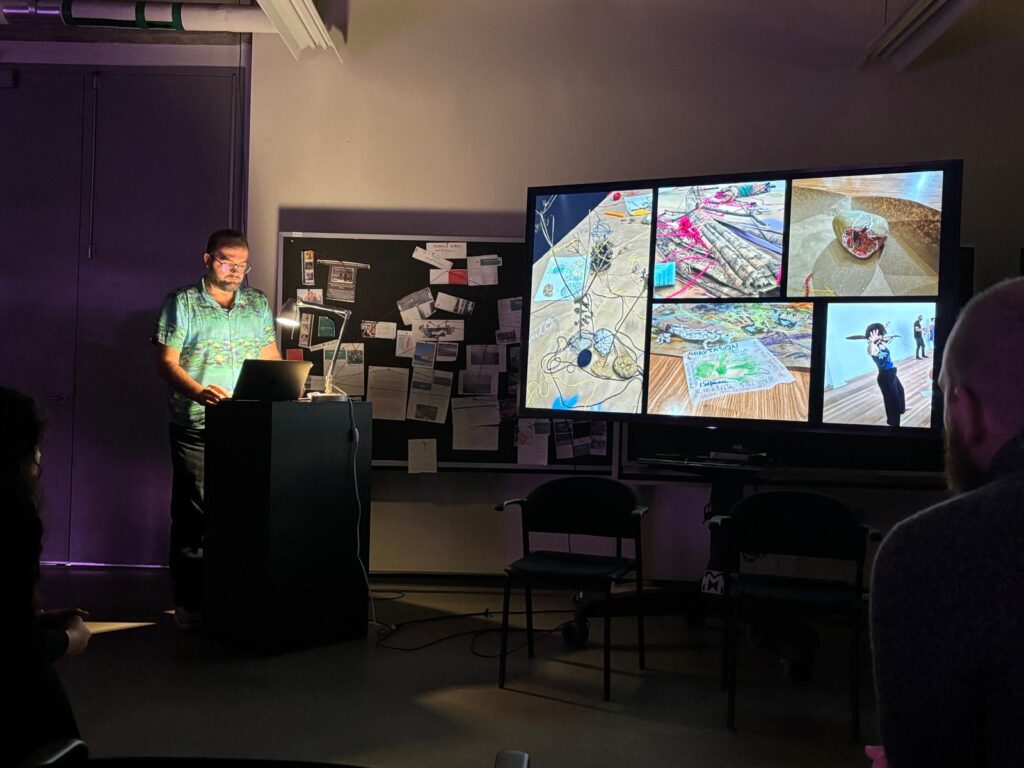
As the event wound down, I realized I had little idea which presenters came from which clusters. That, in and of itself, demonstrates how much the event offered. When it comes to a large Institute with hundreds of members, it can prove challenging for individual researchers to get a sense of how their work fits into the bigger picture (or, for a newcomer like myself, to get a sense of what that picture might be). Milieux’s structure allows each cluster independence and latitude in its activities. Events like Speculations in the PARC actualize those clusters into pieces of a larger whole, with tendrils that overlap and intersect.
I left the EV building that night excited to show Thibodeau’s robots to my partner; thinking about the gaps in the health-care system and my own experiences caring for humans and more-than-humans; trying to remember the last time I’d visited the Lachine Canal, what a circus there might look like.
Speculations in the PARC provided space for diving into shared inquiries, extending the work of the clusters beyond the boundaries of particular labs. Performance, creation, imagination and futurity wove throughout the evening’s presentations – like gestures in a movement piece, or lines of charcoal sketched on the floor of a studio, all part of an unfolding work.
– Rosie Long Decter, Milieux Storyteller

